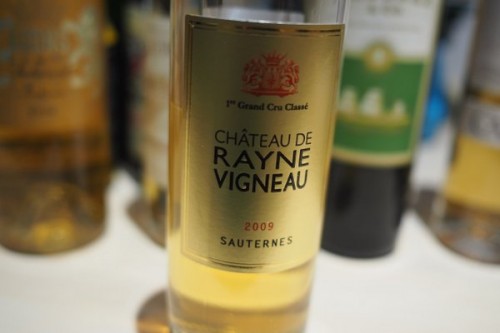
Sweet wines aren’t all that fashionable, but they are delicious. The best sweet wines are among the most complex and concentrated expressions of the vine possible, and in past times they occupied the pinnacle of the fine wine tree. We’ve kind of neglected them of late, partly because in these alcohol-consumption-conscious days we seldom manage to find room for them at the beginning or end of a meal. But I hope that their time will come again.
There are a number of different ways of making sweet wines, but the general principle is to concentrate the sugar levels in some way. The simplest way is to hang the grapes on the vine for longer, resulting in massive sugar levels: late harvest style (a great example would be the natural sweet wines of Constantia, made from very ripe grapes that have raisined a bit on the vine). Then, when fermentation is complete, there will be sugar left in the wine. One variation on this theme is to stop fermentation before all the sugar is used up (as occurs in German pradikat wines), either by chilling or adding high levels of sulfur dioxide, or both. Or the same ends can be achieved by fortifying the wine while fermentation is still underway, taking the alcohol levels to toxic levels (this occurs in Port, or in Vin Doux Naturels of the south of France).
One way of concentrating sugars is to dry the grapes after harvest (Pedro Ximenez in Jerez). Another is to cut the cordons and leave the grapes to shrivel on the vine before harvest. Perhaps the most extreme method is to leave the grapes on the vine until the onset of winter, then pick them and press them while they are mostly frozen, resulting in massive sugar and acid levels: ice wine. Another famous method is to let nature do it, as in ‘noble rot’. Here, botrytis attacks healthy, ripe grapes and causes them to shrivel, concentrating sugars and acids, and also changing the metabolism of the grapes so they produce chemical precursors that result in exotic apricot and passionfruit flavours in the wine.
I trawled my stash of wines and pulled out a large batch of sweet ones, which I then tasted over a couple of evenings. These are my notes.
Stella Bella Pink Muscat 2012 Margaret River, Australia
8% alcohol
£10.95 agent Alliance Wine
This has aromas of mint and herbs with some cherry and raspberry. The palate is quite creamy and rounded with a fresh citrussy twist. It’s slightly fizzy and has lovely texture, but I don’t think it was meant to be cellared for five years. Not bad but no more than that. 87/100
Domaine Cazes Muscat de Rivesaltes 2009 Vin Doux Naturel, Roussillon, France
15% alcohol
A blend of Muscat d’Alexandrie and Muscat Petit Grains, farmed organically. Distinctive stuff with some hints of mint and ripe table grapes, along with some barley sugar and spirit notes. It’s concentrated and quite viscous with some savoury herb and mint characters jostling with the sweet grape and syrup characters, finishing quite warm. Lots of personality here, but perhaps it’s best young and vital? 89/100
Domaine des Forges Coteaux du Layon Premier Cru Chaume 2011 Loire, France
11% alcohol
£8.99 Waitrose
Honeyed and concentrated with a lovely citrus and straw character, as well as some savoury spiciness. This has some marmalade character, too, although it’s the thick cut style, with some grip and bitterness. Nice depth here with a savoury spiciness under the sweet fruit. Thought-provoking and potentially long lived. 92/100
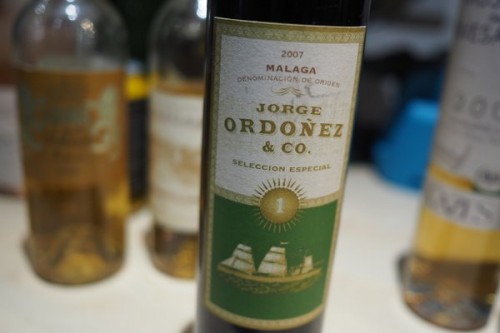
Jorge Ordonez & Co Seleccion Especial 1 2007 Malaga, Spain
13% alcohol
This is a collaboration between Jorge Ordonez and Gerhard Kracher, and the idea for this wine was devised by Jorge and Alois Kracher. The grapes are dried on the vines. Fresh, aromatic nose with fine herbs and sweet ripe table grapes. There are some crystalline fruit notes, too, and hints of mint. The palate is really fresh with lovely sweet grapey notes and some warm spiciness, as well as a hint of marmalade. It’s light and delicate, but complex and balanced too. This has developed really nicely in the bottle, and is still fresh and expressive. 93/100
Dr Loosen Riesling Beerenauslese 2006 Mosel, Germany
6.5% alcohol, bottled in a 187 ml bottle. Golden colour. Very lemony and bright with some apricot and honey notes. There’s a slight spiciness, too. Luscious and sweet but with some lime oil notes keeping things very fresh and tangy. Sweet and fresh, at the same time, this is delicious. Still primary and fruity at age 11. 92/100
Patricius Tokaj Katinka Noble Late Harvest 2011 Hungary
11.5% alcohol
Botrytized and regular berries are harvested together, macerated briefly and then fermented in oak. Corked
Mauregard Monbazillac 2007 France
13% alcohol
Marks & Spencer
From Yvon Mau. Lovely texture here with stony, wax and lanolin savoury notes together with some apricot and citrus peel characters. I find this Monbazillac character really interesting, with the savoury waxy notes quite pronounced. Is this from Semillon? Spicy and complex, and finishing savoury, despite the sweetness. 91/100
Château de Rayne Vigneau 2009 Sauternes 1er Grand Cru Classé, Bordeaux
13.5% alcohol
Very rich and intense with lovely viscous apricot, cantaloupe melon and pear fruit, with some honeyed richness. Very textural with great concentration, richness, smoothness and balance. This has a nectar-like richness to it. Sweet and very impressive with hints of cream, toast and toffee on the finish, which is really long. It might have a narrower dynamic range than the very very best Sauternes, but it’s still quite lovely, and serious. 93/100
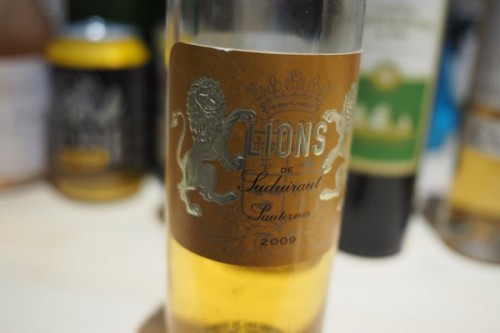
Lions de Suduiraut 2009 Sauternes, Bordeaux, France
14% alcohol
This is the second wine of Suduiraut. It’s beautifully textured and delicate, with a hint of cream and spice under some sweet pear and apricot fruit. Smooth and honeyed with a cedary spicy twist that adds some savoury interest. It’s drinking perfectly now in its mellow maturity. I like the creamy, grapey character. It’s moderately botrytised with a twist of spice, but this is enough. 91/100
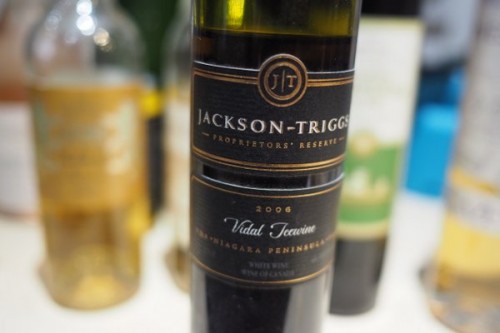
Jackson Triggs Proprietor’s Reserve Vidal Ice Wine 2006 Niagara Peninsula, Canada
10.5% alcohol
Harvested January 30th to February 21st 2007. Pressed at an average temperature of -10 C. 40 Brix, 228 g/l residual sugar. Highly aromatic with raisin, toffee and citrus. The palate has lovely acidity and notes of dried tea and spice, with grapes and raisins, as well as a hint of apricot. Age has added richness and some more of the raisin and candied fruit characters. Concentrated and delicious with a fresh finish. 92/100
Inniskillin Vidal Oak Aged Ice Wine 2006 Niagara, Canada
9% alcohol, 40 Brix harvest, 240 g/l residual sugar. Sweet and viscous with raisins, dried apricots, peach and some lemons. There’s richness and sweetness here, with a lot of raisiny sweetness, as well as a hint of vanilla. This has developed really nicely, and has some freshness balancing the mellow notes that have come from age. 93/100
Seifried Sweet Agnes Riesling 2010 Nelson, New Zealand
10.5% alcohol
This fruit is partially (artificially) frozen before pressing. Yellow/gold colour. Pithy, citrussy nose with some orange peel and honey notes. There’s a viscous, slightly oily character to the palate with some creamy notes, and bright, vivid, pithy lemony fruit. Finishes with marmalade and lemon curd, and brisk acidity. Attractive, but better young I reckon. 89/100
Yealands Estate Noble Sauvignon Blanc 2014 Awatere, Marlborough, New Zealand
11.5% alcohol
Marmalade, honey, apricot and spice on the nose. The palate shows lovely depth of sweet peachy fruit with a subtle ginger and citrus peel twist, and lots of botrytis character. Lovely complexity to this wine which is now drinking at peak. Nice acidity keeps things in balance. So expressive. 93/100
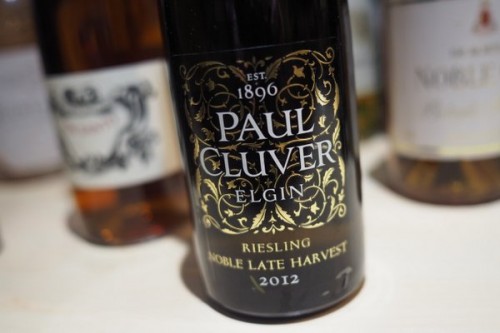
Paul Cluver Riesling Noble Late Harvest 2012 Elgin, South Africa
9.5% alcohol
Fine aromatics of grape, raisin, citrus and honey. The palate is sweet yet quite fresh with spicy citrus and marmalade notes, some apricot, and pithy, minty freshness. Nice tension here between the lemon and orange peel freshness and the richer, raisin and table grape sweetness. 92/100
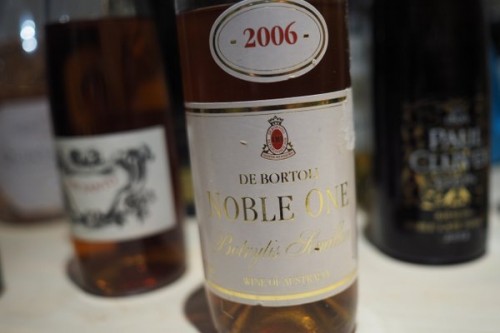
De Bortoli Noble One Botrytis Semillon 2006 New South Wales, Australia
10% alcohol
Gold/bronze colour. Very rich and spicy, with ginger, herbs, apricot and sandalwood characters in the mix. Really complex on the palate with cedar spice, marmalade and apricot, with some lemon peel freshness on the finish. Really intense and spicy, with lots of appeal. This has developed really well. 94/100

Fattoria dei Barbi Vinsanto del Chianto 2007 Tuscany, Italy
16% alcohol
Bronze/brown colour, with some red hints. Sweet, spicy, cedary nose is really lively. The palate has a savoury cask quality, some sweetness, hints of baked apple and cinnamon, and some citrus freshness. A remarkable combination of sweet and savoury with some oxidative notes coming to the fore. 91/100
Contero Brachetto D’Acqui 2012 Italy
5.5% alcohol
Think Moscato d’Asti but red. Fresh with red grape, cherry and spice characters, as well as some baked apple. Sweet, with the fizziness offsetting this, resulting in a sweet, refreshing, grapey wine. 89/100
Blind Spot Rutherglen Muscat NV Australia
17.5% alcohol
The Wine Society
Sweet and viscous with notes of raisin, tea, table grapes and toffee. There’s some treacle richness, too. It’s sweet but balanced with rich, raisiny fruit and some sweet alcoholic notes, together with some spiciness. Lovely. 92/100
Find these wines with wine-searcher.com
See also: Eating sugar: why old sweet wines often taste drier than they are
1 Comment on Discussing sweet wines, with notes on 18 interesting bottles

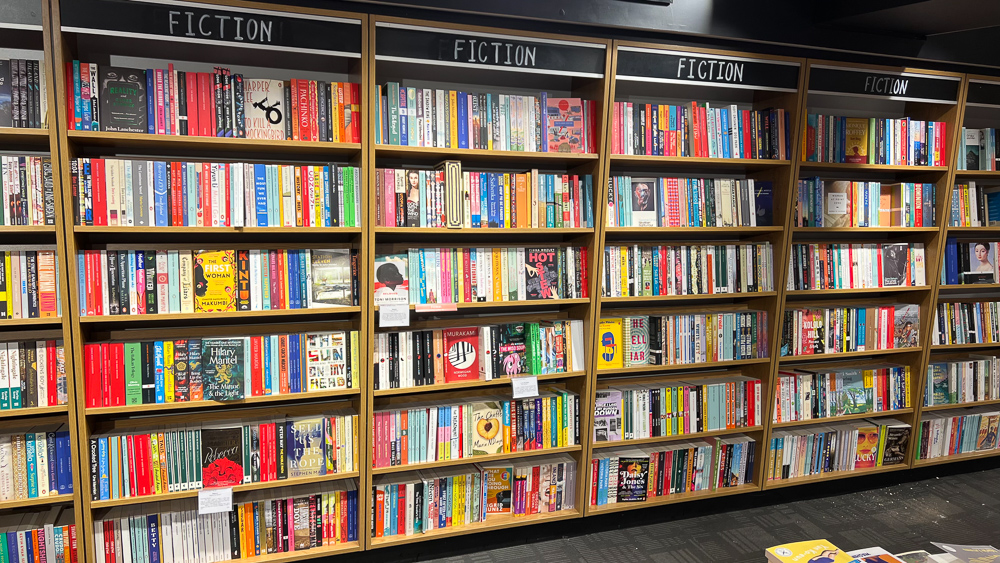
Nice summary of sweet wine methodology. Having worked in both Sauternes (Ch.Guiraud ~2.5y) and Rivesaltes (Dom.Cazes, 6m) I’m a huge fan of sweet wines & I am always trying to illustrate their versatility. Actually, you may have inspired a companion piece from the archives…. Portes Ouvertes Sauternes 2010 & pairing liquoreux throughout a 5-course meal…
It might well be 7am but I’m suddenly thirsty….!